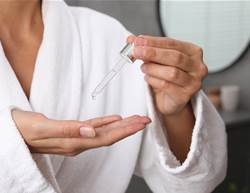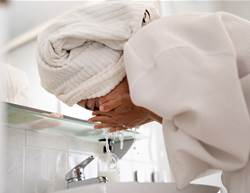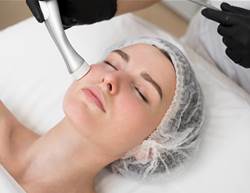If you only do one thing to maintain your beauty routine, moisturising is it! Aside from applying SPF, hydration is essential, even for oily and acne-prone complexions. The key is choosing the right formula for your skin type.
Why is moisturising so important?
“Our day-to-day life — including exposure to dirt, oil, air pollution and stress — can irritate skin and contribute to accelerated ageing,” says dermatologist Dr Fatima Fahs. “Moisturising regularly gives skin a chance to repair and reset, provides necessary hydration and can help reduce the appearance of wrinkles and signs of ageing by improving elasticity.”
The Anatomy of an Effective Moisturiser
Moisturising lotions and creams are emulsions of oil and water (along with other ingredients for nourishing, treatment and product preservation) that help replenish hydration, keeping moisture in skin and preventing dryness. But some perform better than others because of their formulations. Beauty research scientists recommend choosing face moisturisers that contain these key categories of skincare ingredients for optimal efficacy, whatever your needs or skin type.
EMOLLIENTS, which are hydrating ingredients like plant oils, squalane, fatty acids and triglycerides that moisturise and soften. “They lightly coat skin, smoothing dry texture,” explains beauty chemist Danusia Wnek.
HUMECTANTS draw moisture into skin from the environment or skin’s deeper layers. Common examples are glycerin and hyaluronic acid.
OCCLUSIVES form a barrier over skin to lock in hydration and prevent moisture loss. They can include waxes (synthetic or derived from plants or beeswax), plant butters (like shea and cocoa butter), petrolatum and silicones.
FIND THE BEST FORMULA FOR YOUR SKIN
Dry skin
Instead of lotions, seek out richer creams, Wnek recommends — they are usually made with more occlusive ingredients.
Oily/acne-prone skin
Formulas labelled “noncomedogenic” or “oil-free” are less likely to clog pores, Wnek says. Lean toward lotions or gels, which generally are thinner and lighter than creams. For acne-treatment products, be sure the label lists an active ingredient like benzoyl peroxide or salicylic acid.
Combination skin
Opt for more lightweight formulations like lotions and use creams on dry areas such as the cheeks as needed, Dr. Fahs suggests.
Sensitive skin
Choose products labelled “hypoallergenic,” which claim to be made without ingredients that are potential irritants (these can include fragrance and alcohol). Look for words like “calming,” “soothing,” “redness-reducing” and “anti-redness” on packaging.
APPLICATION 101
For maximum benefits, apply moisturiser to clean skin daily (in the morning and/or evening as needed for your skin type), after any other skincare treatment products like serums. Be sure to cover your entire face, including the areas around your eyes, nose and mouth, and “don’t forget to smooth it down to your neck,” Dr. Fahs says. Try massaging in the lotion or cream: “This will increase its absorption and effectiveness and also improve circulation,” advises dermatologist Dr Dendy Engelman.
Prevention Picks:
FOR DRY SKIN
Kiehl’s Ultra Face Cream, $55, Kiehls.com.au
Avocado oil and squalene provides long lasting hydration in a light-textured cream.

FOR OILY SKIN
QV Face Oil Free Moisturiser, $17.49, chemistwarehouse.com.au
This oil-free moisturiser provides effective hydration without clogging pores.

FOR SENSITIVE SKIN
Avene Hydrance Light Cream, $56.99, chemistwarehouse.com.au
This hypoallergenic moisturiser is ideal for combination and sensitive skin.

FOR COMBINATION SKIN
Australian Skin Institute All Day Hydration, $69, australianskininstitute.com.au
This lightweight cream rich in vitamin B3, hyaluronic acid and zinc moisturises and protects.










